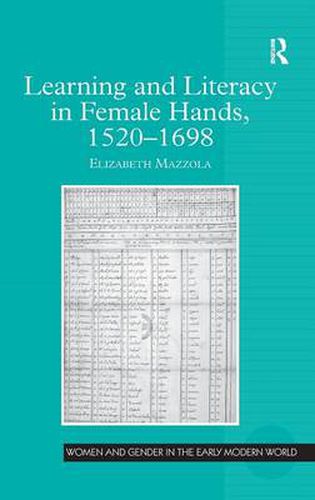Readings Newsletter
Become a Readings Member to make your shopping experience even easier.
Sign in or sign up for free!
You’re not far away from qualifying for FREE standard shipping within Australia
You’ve qualified for FREE standard shipping within Australia
The cart is loading…






Focusing on the unusual learning and schooling of women in early modern England, this study explores how and why women wrote, the myriad forms their alphabets could assume, and the shape which vernacular literacy acquired in their hands. Elizabeth Mazzola argues that early modern women’s writings often challenged the lessons of their male teachers, since they were designed to conceal rather than reveal women’s learning and schooling. Employed by early modern women with great learning and much art, such difficult or ‘resistant’ literacy organized households and administrative offices alike, and transformed the broader history of literacy in the West.
Chapters treat writers like Jane Sharp, Anne Southwell, Jane Seager, Martha Moulsworth, Elizabeth Tudor, and Katherine Parr alongside images of women writers presented by Shakespeare and Sidney. Managing women’s literacy also concerned early modern statesmen and secretaries, writing masters and grammarians, and Mazzola analyzes how both the emerging vernacular and a developing bureaucratic state were informed by these contests over women’s hands.
$9.00 standard shipping within Australia
FREE standard shipping within Australia for orders over $100.00
Express & International shipping calculated at checkout
Focusing on the unusual learning and schooling of women in early modern England, this study explores how and why women wrote, the myriad forms their alphabets could assume, and the shape which vernacular literacy acquired in their hands. Elizabeth Mazzola argues that early modern women’s writings often challenged the lessons of their male teachers, since they were designed to conceal rather than reveal women’s learning and schooling. Employed by early modern women with great learning and much art, such difficult or ‘resistant’ literacy organized households and administrative offices alike, and transformed the broader history of literacy in the West.
Chapters treat writers like Jane Sharp, Anne Southwell, Jane Seager, Martha Moulsworth, Elizabeth Tudor, and Katherine Parr alongside images of women writers presented by Shakespeare and Sidney. Managing women’s literacy also concerned early modern statesmen and secretaries, writing masters and grammarians, and Mazzola analyzes how both the emerging vernacular and a developing bureaucratic state were informed by these contests over women’s hands.